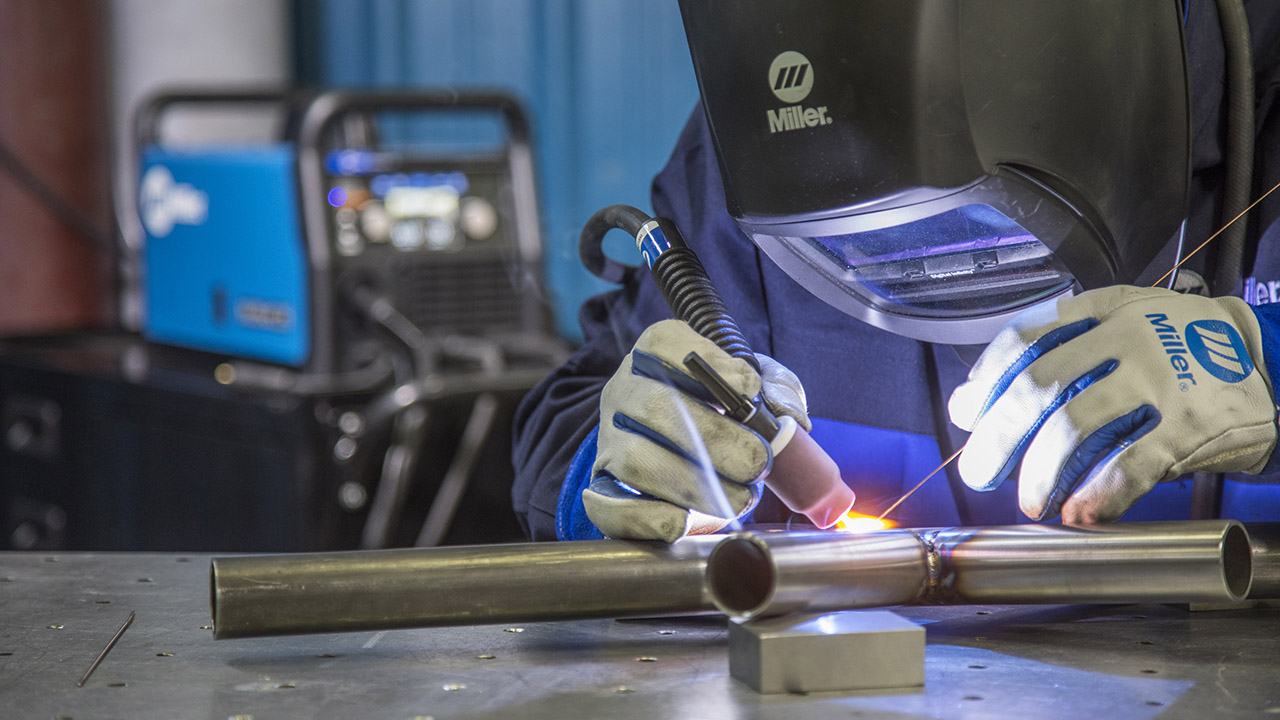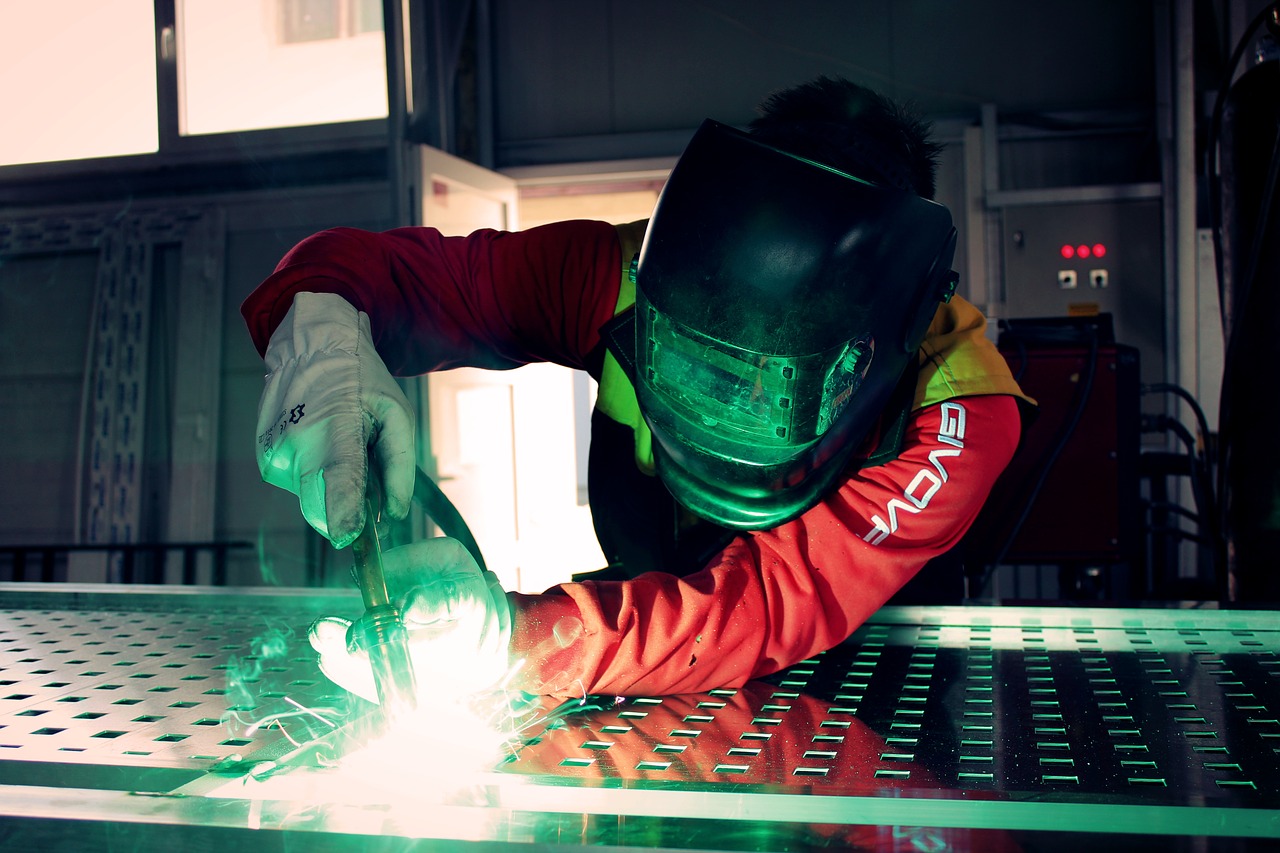All Concerning Welding: Trick Insights Into Techniques and Best Practices for Success
Welding incorporates a selection of methods, each fit for specific materials and applications. Understanding these methods, such as GMAW, SMAW, and TIG, is essential for achieving ideal results. The best equipment and safety and security techniques can not be forgotten. As preparation and repairing play important functions in the welding process, grasping these aspects can greatly enhance the quality of the end product. What are the vital aspects that ensure a successful weld?
Understanding Different Welding Strategies
Welding strategies include a variety of approaches, each fit to specific applications and products. Amongst one of the most common techniques are Gas Steel Arc Welding (GMAW), Secured Steel Arc Welding (SMAW), and Tungsten Inert Gas Welding (TIG) GMAW, also called MIG welding, is preferred for its rate and flexibility, making it optimal for thin products. SMAW, or stick welding, is favored for its simpleness and effectiveness in outside settings, especially with thicker steels. TIG welding provides precision and control, making it ideal for elaborate job and non-ferrous metals (Welding). Each method has its distinct advantages and factors to consider, enabling welders to choose the most effective technique based on the task's needs, product type, and preferred results. Comprehending these strategies is essential for successful welding
Vital Welding Devices and Tools
While numerous welding methods need certain skills, the best equipment and tools are equally vital for attaining quality outcomes. Essential welding tools includes welding machines, which vary relying on the technique-- such as MIG, TIG, or stick welding. Safety equipment, consisting of aprons, handwear covers, and helmets, warranties safety and convenience during the process. On top of that, fixtures and clamps help safeguard products in position, making certain accuracy in welds. Consumables like welding poles, cord, and securing gas are also critical components that affect the top quality of the weld. Furthermore, tools such as cutters and grinders help with surface preparation and post-weld ending up, contributing to a professional end result. Buying high-quality tools inevitably boosts the performance and efficiency of welding tasks.
Security Practices in Welding
Correct security practices are essential in the welding sector to protect workers from potential risks. Welders have to wear ideal personal safety tools (PPE), consisting of helmets with correct shading, gloves, and flame-resistant clothing. Adequate ventilation is essential to minimize direct exposure to damaging fumes and gases created during the welding procedure. Additionally, employees should be learnt the correct handling of welding devices to avoid crashes. Fire security procedures, such as maintaining combustible products away from the welding location and having fire extinguishers readily offered, are essential. Routine examinations of devices and workspaces can help identify potential threats before they bring about mishaps. By adhering to these safety and security techniques, welders can create a safer working atmosphere and reduce dangers related to their trade.
Readying Materials for Welding
Preparing materials for welding is an essential action that greatly influences the top quality and integrity of the end product (Welding). Correct prep work entails cleaning up the surface areas to get rid of contaminants such as dust, oil, and corrosion, which can endanger the weld. Techniques such as grinding, sanding, or utilizing solvents are frequently utilized to accomplish a tidy surface area. Additionally, guaranteeing that the products mesh comfortably is vital; gaps can lead to weak welds. It's likewise vital to consider the positioning and positioning of the components, as this will certainly affect the convenience of welding and the final outcome. Selecting the suitable filler product and guaranteeing compatibility with the base steels is important for attaining strong, resilient welds.
Tips for Achieving High-Quality Welds
Accomplishing top quality welds requires attention to detail and adherence to finest techniques throughout the welding process. Proper joint prep work is essential, making sure surface areas are clean and free from contaminants. Choosing the ideal filler product and welding technique based on the base metals is vital for excellent bonding. Preserving constant traveling speed and angle while welding can advertise and prevent defects uniformity. In addition, controlling heat input is important; extreme warm can cause bending and damaged joints. Frequently evaluating the welds throughout the process permits for instant modifications if needed. Ultimately, using suitable post-weld treatments, such as cleaning and stress alleviation, can boost the longevity and honesty of the weld, inevitably guaranteeing a successful end result.
Fixing Common Welding Issues
Welding often offers difficulties that can affect the quality and stability of the end product. Typical problems such as porosity, irregular weld grains, and overheating can occur, each requiring details repairing techniques. Understanding these troubles is vital for welders to enhance their abilities and accomplish perfect outcomes.
Porosity Issues Discussed
Although porosity can frequently be neglected, it stays a crucial problem in welding that can endanger the integrity of an ended up product. Porosity describes the existence of little gas pockets within the weld grain, which can weaken the joint and lead to early failing. This issue typically develops from impurities, wetness, or improper shielding gas protection during the welding procedure. To mitigate porosity, welders must validate that the base materials are tidy and completely dry, utilize proper securing gases, and keep regular welding parameters. On a regular basis inspecting the devices and atmosphere can likewise aid recognize potential issues prior to they manifest in the weld. Attending to porosity successfully is crucial for achieving solid, long lasting welds that fulfill top quality criteria.

Inconsistent Weld Beads
Inconsistent weld grains can significantly affect the high quality and stamina of an ended up product. Numerous kelly welding variables contribute to this issue, including inappropriate travel speed, incorrect amperage settings, and irregular electrode angles. When the welder moves as well promptly, a grain may appear narrow and do not have penetration, while moving also slowly can cause excessive buildup. Furthermore, using the incorrect amperage can lead to either undercutting or too much spatter, both of which compromise weld stability. The welder's technique, such as inconsistent torch read the full info here motion, can additionally bring about uneven grain appearance. To mitigate these issues, welders should concentrate on maintaining steady, controlled motions and making certain proper tools setups to achieve uniformity in their welds. Consistency is key to achieving solid and reputable welds.
Getting Too Hot and Bending Issues
Too much warmth during the welding process can lead to significant getting too hot and contorting issues, affecting the architectural integrity of the work surface. These troubles frequently materialize as distortion, which can endanger placement and fit-up, making further assembly challenging. Variables adding to overheating consist of the selection of welding criteria, such as voltage and take a trip speed, in addition to the sort of material being welded. To reduce these concerns, welders should maintain regular traveling rate and suitable heat input while checking the work surface temperature. In addition, preheating or post-weld warm treatment can aid alleviate stress and anxieties brought on by rapid cooling - Belgrade Fabrication. Normal inspection and adherence to finest practices are crucial in stopping getting too hot and making sure the long life and integrity of bonded structures
Regularly Asked Questions
What Are the Profession Opportunities in the Welding Sector?
The welding market uses diverse career opportunities, consisting of settings as welders, educators, designers, and assessors. Specialists can operate in manufacturing, building, aerospace, and automotive industries, gaining from strong demand and competitive incomes in different functions.
How Can I Improve My Welding Rate Without Sacrificing Top Quality?
To enhance welding speed without sacrificing top quality, one ought to practice reliable strategies, maintain equipment, maximize settings, and enhance hand-eye sychronisation. Regular training and looking for comments can likewise considerably add to achieving faster, premium welds.
What Qualifications Are Readily Available for Welders?
Numerous certifications exist for welders, including those from the American Welding Society (AWS), the National Center for Construction Education and Study (NCCER), and various industry-specific organizations. These credentials improve employability and demonstrate ability efficiency.
Just How Does Welding Influence the Qualities of Metals?
Welding affects the residential properties of metals by changing their microstructure, which can cause changes in stamina, ductility, and solidity. Heat input and air conditioning rates during the process considerably impact these product characteristics.
Can I Weld Dissimilar Metals With Each Other?
